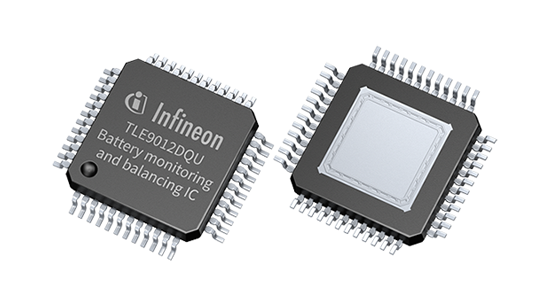Munich, Germany – NETA Auto, a Chinese new energy vehicle (NEV) manufacturer, is the first to implement the new generation battery management system (BMS) solution from Infineon Technologies AG. Infineon’s BMS solution will be used in the NETA vehicle series. It was developed together with the supporting supplier B&Z Technology, which is specialized in battery management systems, motor controls and other system solutions for new energy vehicles. The BMS total solution promotes the development of NEVs towards high-performance and high quality. While Infineon provides the relevant technical support, B&Z handles system design and development, testing and verification, mass production and delivery.
“Innovation to drive customer value increasingly depends on our ability to differentiate our customers’ systems,“ said Zhang Yong, NETA Co-Founder & CEO. “By leveraging Infineon’s BMS total solution, we can provide system functionality to our customers while reducing system cost and system deployment time.”
“Infineon products have an outstanding position in the areas of vehicle electrification, autonomous driving, connected vehicles and security,” said Freeman Cao, Senior Vice President & Head ATV of Infineon Greater China. “We always consider product quality as a fundamental driver and strive to achieve the goal of zero defects while meeting the highest requirements for functionality, reliability and time-to-market against cost. Last year, Infineon shipped several billions of automotive devices, which is the best affirmation of Infineon’s product quality by the market.”
The BMS solution was designed to meet the system requirements for NEVs. It adopts different chips from Infineon: the latest generation of the Li-ion battery monitoring and balancing IC TLE9012DQU, the iso UART transceiver IC TLE9015DQU. In addition, the main controller uses the AURIX™ MCU.
The TLE9012DQU is based on Infineon’s mature 90 V/130 nm process with in-houses frontend and backend production guaranteeing the reliability of product design, production and delivery. The chip features 13 independent built-in high-precision 16-bit analog-digital-converters (ADC) that enable simultaneous accurate cell voltage sampling. The TLE9012DQU can perform continuous passive equalization of up to 200 mA for each cell separately. Each ADC is equipped with a digital low-pass filter down to 35 Hz to minimize peripheral circuit design and reduce the cost of the BMS system. The independent ADC channel of each cell significantly reduces the measurement time of the entire battery string and optimizes the synchronization of voltage and current sampling, realizing highly accurate SoC and SoH estimations as well as other condition predictions for EV battery pack safety.
The TLE9015DQU is internally equipped with a bidirectional daisy-chain signal transceiver function. This sends acquired data in both directions to ensure that each analog front end (AFE) draws the same amount of power during operation. This provides equal power consumption and reduces the risk of unbalanced cell voltage.












